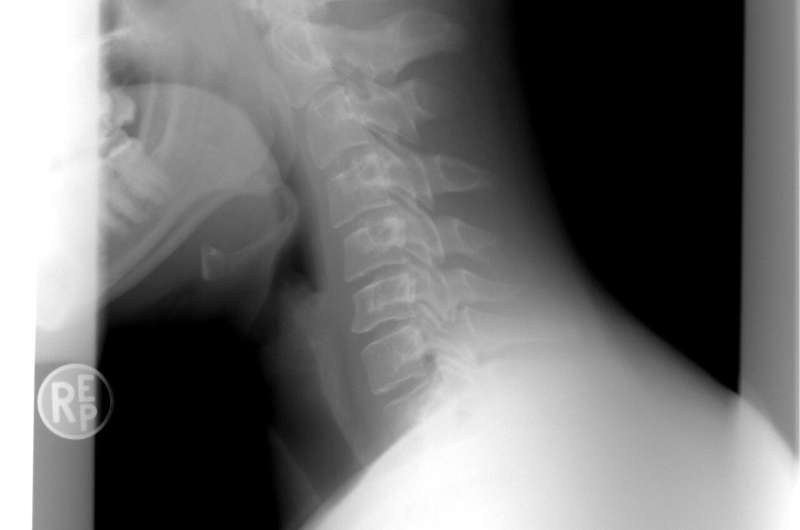This article has been reviewed according to Science X's editorial process and policies. Editors have highlighted the following attributes while ensuring the content's credibility:
fact-checked
peer-reviewed publication
trusted source
proofread
Tissue bridges as predictors of recovery from cervical spine injuries

Results of the longitudinal study, "Prognostic value of tissue bridges in cervical spinal cord injury," have the potential to change clinical practice. They have been published in The Lancet Neurology.
The team led by lead author Dr. Dario Pfyffer and senior author Prof. Dr. med. Patrick Freund from Balgrist University Hospital and the University of Zurich, which includes SCI experts from around the world, has successfully developed models that incorporate tissue bridges in the spinal cord in a large, multicenter cohort of patients with cervical SCI for improved prognosis of clinical outcomes.
These tissue bridges were measured on MRI images (taken early after the onset of the spinal cord injury). This has resulted in significant added value for the previous prognosis models, which are based on recording the clinical condition of patients upon admission to hospital. Dr. Pfyffer said, "An accurate prediction of the outcome is of the utmost importance for patients, treating therapists and treating doctors."
Remarkably, in all three rehabilitation centers, the tissue bridges also proved to be more performative and accurate predictors than the baseline clinical data for dividing patients into subgroups with similar clinical outcomes.
Dr. Pfyffer stresses how important it is that models for predicting recovery are reproducible and generalizable to new patients. In particular, the study results in the individual SCI patient cohorts of the three centers with their demographic and clinical differences were validated.
"Our models and results can be transferred to other patient cohorts and are valid for all SCI centers, MRI scanners and people carrying out and evaluating the measurements." This lays the foundation for a successful application of tissue bridges for the improved implementation of multicenter intervention studies.
In this pioneering imaging study, the progress of recovery was investigated when the patient was discharged from hospital approximately three months after the injury and at the follow-up after 12 months. As a result, the study was able to provide convincing evidence that tissue bridges in the spinal cord are associated with short- and long-term clinical improvements, underscoring the broad clinical applicability of the study approach.
The study shows the incredible potential of tissue bridges to optimize clinical decision-making, patient counseling and planning SCI studies if tissue bridges are routinely captured as part of clinical care standards. The study is also a further step in the development of more specific rehabilitation programs and individualized treatment strategies for people with spinal cord injuries.
Patients in this multinational study were treated at Balgrist University Hospital, Zurich (Switzerland), BG Trauma Center, Murnau (Germany) and Craig Hospital, Denver (U.S.).
More information: Dario Pfyffer et al, Prognostic value of tissue bridges in cervical spinal cord injury: a longitudinal, multicentre, retrospective cohort study, The Lancet Neurology (2024). DOI: 10.1016/S1474-4422(24)00173-X


















